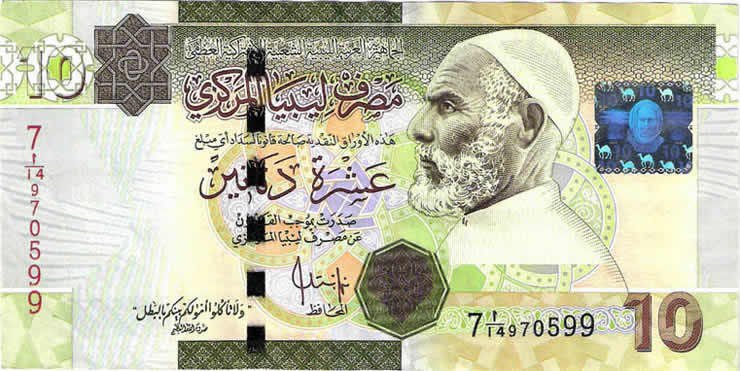The Sad Tale of Depreciating Currencies in Africa
by Vennisa Owusu-Barfi
The tale of currency depreciation and inflation in African countries is a cyclic marathon without end. Many African currencies enjoyed a strong head start in the early 60s at the turn of independence. However, they spiraled into depreciation largely due to a combination of political mismanagement and instability.
The Nigerian Naira
Source: istockphoto.com
Economic Focus: Nigerian Naira
Let’s take the Naira (₦) for example which functions as the legal tender for the Federal Republic of Nigeria. It is divided into notes called the naira with each note divided into 100 kobo (coins) and ranges from ₦5 to ₦1000. At the start of its introduction in 1973, the standard rate of exchange was £1 = ₦2 as the nation aimed to transition from the Nigerian pound and shilling which had been circulating since 1959 and still symbolized the vestiges of colonization.1
And no, however, even though oil prices have skyrocketed (of which Nigeria is the 10th largest exporter), the current exchange rate is ₦710 to $1/£ 0.86 which is a staggering 100% depreciation in just 50 years since its introduction. For a more modernistic view, when comparing 2010-2014 against 2022,the naira has depreciated by 30.8% and faces a greater chance of further depreciation.2
Zooming Out
The Ghana Cedi
Source: istockphoto.com
Against the backdrop of other currencies in the region, Nigeria’s situation is rather commonplace. Apart from the hyperinflation in Zimbabwe which has been overanalyzed by mainstream media, other nations have followed suit with Ghana (the Cedi 50% depreciated in 2022 alone), Sudan (Sudanese Pound has depreciated by 85% since 2020), Malawi (Malawian Kwacha has depreciated by 39.5% since 2020)3 etc.
Highest Performing Currencies: What are they doing right?
The Libyan Dinar
Source: www.temehu.com
Among the nations with the highest performing currencies across the continent, the most crucial key to their success appears to be governmental and economic policies that spearhead development. These currencies, the Zambian Kwacha, Tunisian Dinar, Moroccan Dinar etc are in a healthy state due to specific government policies that aim to protect the currency value and reduce inflation. For example, the Libyan Dinar even though rocked by the Libyan civil war in 2011 is still one of the strongest currencies on the continent due to strict economic policies from its central bank as well as support from and proper management of its natural resources.4
How are African nations responding to this?
Other groups advocate for nations in different economic and cultural zones, like West African states under ECOWAS to unite under a single currency; in this case, the eco. Similarly, East African nations have plans of reuniting and reforming the East African shilling. This is intended to promote trade and promote a stronger currency as seen in the introduction of the Euro for the European Union. The efficacy of these proposals are yet to be seen as most of these plans have been postponed due to the pandemic with hopeful implementation by 2025.4
Source: richardkyereh.com
Outlook and Conclusion
We all look forward to the day in which the rapid depreciation and inflation commonly faced by many African nations is a thing of the past. Though our current state may not seem optimistic, only time will tell how these new economic plans and policies will shape the continent. As African people become increasingly interconnected in terms of trade and culture, we hope to see a shift towards economic growth and development across the continent.
—
Hi fellow NKENNERS, you can comment below on what you think the best way forward is for African nations to spearhead development across the continent.
Also, feel free to leave any topic suggestions or ideas that you hope to be covered in our blog series.
Sources:
Central Bank of Nigeria: Home. Central Bank of Nigeria | Home. (n.d.). Retrieved September 12, 2022, from https://www.cbn.gov.ng/
Ifeanyi, U. J. (2022, July 12). Naira records second-worst quarter of depreciation in Q2 2022. Nairametrics. Retrieved September 12, 2022, from https://nairametrics.com/2022/07/11/naira-records-second-worst-quarter-of-depreciation-in-q2-2022/
Business Insider. (n.d.). Here are the 7 worst-performing African currencies in 2022. Business Insider. Retrieved September 12, 2022, from https://africa.businessinsider.com/local/markets/7-worst-performing-african-currencies-in-2022/s5kqzk1
Ambani, S. (2022, August 18). List of highest currencies in Africa 2022. Nasonga. Retrieved September 12, 2022, from https://nasonga.com/highest-currency-in-africa/
Smith, E. (2020, September 29). West Africa's new currency could now be delayed by five years. CNBC. Retrieved September 12, 2022, from https://www.cnbc.com/2020/09/29/west-africas-new-currency-could-now-be-delayed-by-five-years.html



